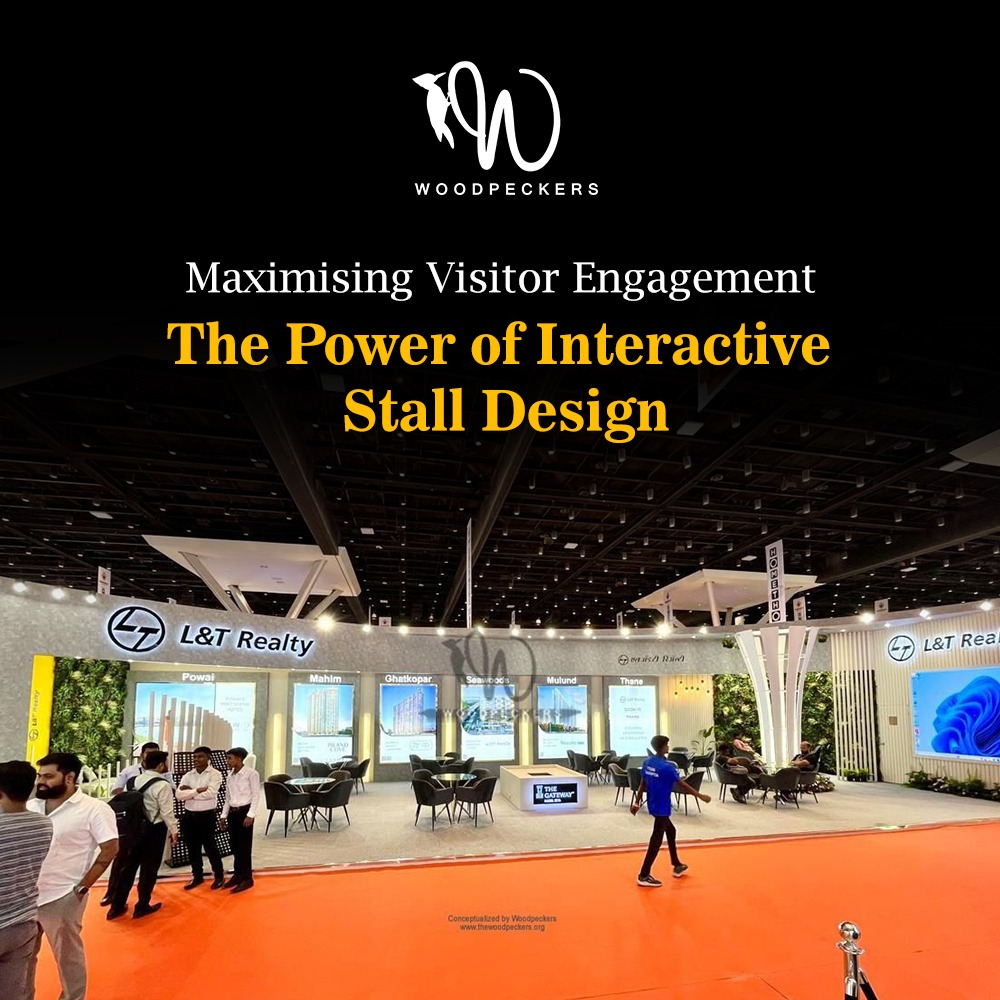Event stall design is a bustling space of discovery, intrigue, and engagement. In a world where capturing and holding attention is increasingly challenging, interactive stall designs are proving to be a game-changer. Integrating technologies such as AR/VR, immersive touchpoints, and dynamic displays not only enhances visitor experience but also increases brand recall and overall stall engagement. Let us explore the methods and real-world examples where exhibition stall designers have excelled in creating captivating exhibition stalls.
Interactive elements have swiftly moved from being novel additions to essential components of modern stall design. According to recent industry studies, exhibitions with interactive elements report up to a 60% increase in visitor engagement. The demand for memorable experiences is fuelling a shift towards stalls that invite attendees to interact rather than passively observe. Creative exhibition stall design leverages sensory engagement, technology, and strategic layout to create environments that stand out. Let’s dive into the main components of interactive stall design and how they’re influencing visitor behaviour.
- Augmented Reality (AR) and Virtual Reality (VR) Experiences
AR and VR have revolutionised the way exhibitions are experienced, breaking the boundaries of physical space. Through AR, visitors can interact with digital information superimposed on real-world objects, while VR immerses them in entirely new environments. These technologies provide exhibitors with an edge, offering experiences that would otherwise be impossible in a traditional stall setting.
National Geographic’s event stall design at the CES tradeshow in Las Vegas showcased a prime example of VR integration. The stall offered visitors a virtual tour of some of the world’s most remote and pristine landscapes, bringing a slice of adventure into the convention hall. Visitors were not only intrigued but fully engaged, spending several minutes immersed in this virtual world, which enhanced their connection with the brand’s values.
- Interactive Touchpoints: Keeping Visitors Involved
Interactive touchpoints serve as anchors of engagement. Unlike traditional displays, these elements invite visitors to engage through physical or digital touch, reinforcing the brand message. Touchscreens, for instance, enable users to navigate through a company’s portfolio or explore product options. Gesture-based controls add another layer of intrigue, creating memorable, immersive experiences.
At one of Europe’s largest interior design shows, Häfele, a German manufacturer of hardware and fitting systems, showcased an interactive product display that allowed visitors to experience different kitchen fittings firsthand. By physically interacting with the cabinets, drawers, and appliances, visitors could feel the functionality and quality. This tactile experience brought Häfele’s products to life and gave the audience a compelling reason to remember and return to the brand.
- Dynamic Displays: Engaging Visuals that Attract Attention
Dynamic displays, such as digital walls or kinetic installations, are becoming increasingly popular in exhibition stall design. These displays use motion, light, and video to catch the eye and add visual intrigue. Since they can easily be tailored to show various content, they are adaptable for brands looking to convey multiple messages in a limited space.
Samsung’s interactive wall display at the Mobile World Congress drew visitors in with its innovative use of lights and movement. The wall included a combination of videos, animations, and product information that responded to touch, creating an engaging showcase of Samsung’s latest innovations. This approach enabled Samsung to demonstrate various aspects of their products while also capturing visitor attention with constant movement and visually stunning design.
- Designing for Flow: The Layout of Interactive Elements
While interactive elements are key, the overall stall layout is equally important. Design flow should strategically guide visitors through different zones, ensuring they experience every interactive aspect. Clear signage, unobstructed pathways, and designated areas for different activities make stalls easier to navigate. A good layout ensures that visitors spend more time in the stall without feeling overwhelmed or lost.
At the Auto Expo in Delhi, Toyota used a multi-zone layout to create distinct areas for different experiences, from AR demonstrations to touchscreens showcasing vehicle features. This layout encouraged visitors to flow from one experience to the next, resulting in a seamless journey through the stall. The result was a well-rounded experience where visitors were naturally drawn into engaging with each part of the display.
Measuring the Impact of Interactive Stalls
Interactive stall designs do more than captivate audiences; they offer measurable benefits for exhibitors. Metrics such as dwell time, visitor engagement rate, and lead conversion rate provide valuable insights into the effectiveness of the stall design. Advanced systems, such as facial recognition and RFID badges, can even track visitor movement and interaction levels, helping exhibitors gauge which elements were most impactful. By analysing this data, companies can refine their future designs to further optimise engagement. For example, if a brand finds that its VR demonstration drew the most engagement, it can invest more in similar experiences at future events.
For exhibitors looking to maximise engagement, the following best practices are crucial:
- Incorporate technology thoughtfully: AR and VR can create unforgettable experiences, but only if they’re used to convey meaningful brand messages.
- Engage multiple senses: Using touchpoints, visual displays, and even sound can create an immersive experience that keeps visitors involved.
- Prioritise layout: Ensure that the stall layout flows intuitively, guiding visitors from one interactive element to another.
- Gather data: By measuring engagement and dwell time, exhibitors can gather insights into what works best and refine their approach for future events.
The power of creative exhibition stall design lies in its ability to captivate, engage, and create lasting impressions. As technology advances and visitor expectations grow, exhibition stall fabricators must continue to innovate, moving beyond static displays to create immersive, memorable experiences. Whether you’re an exhibitor or a designer stall professional, the future of stall design lies in understanding the psychology of engagement and the technologies that bring it to life. Embrace the possibilities of interactive elements with Woodpeckers Global, and you’ll be well on your way to creating a standout presence in any exhibition. Visit https://woodpeckersglobal.com/ today!







